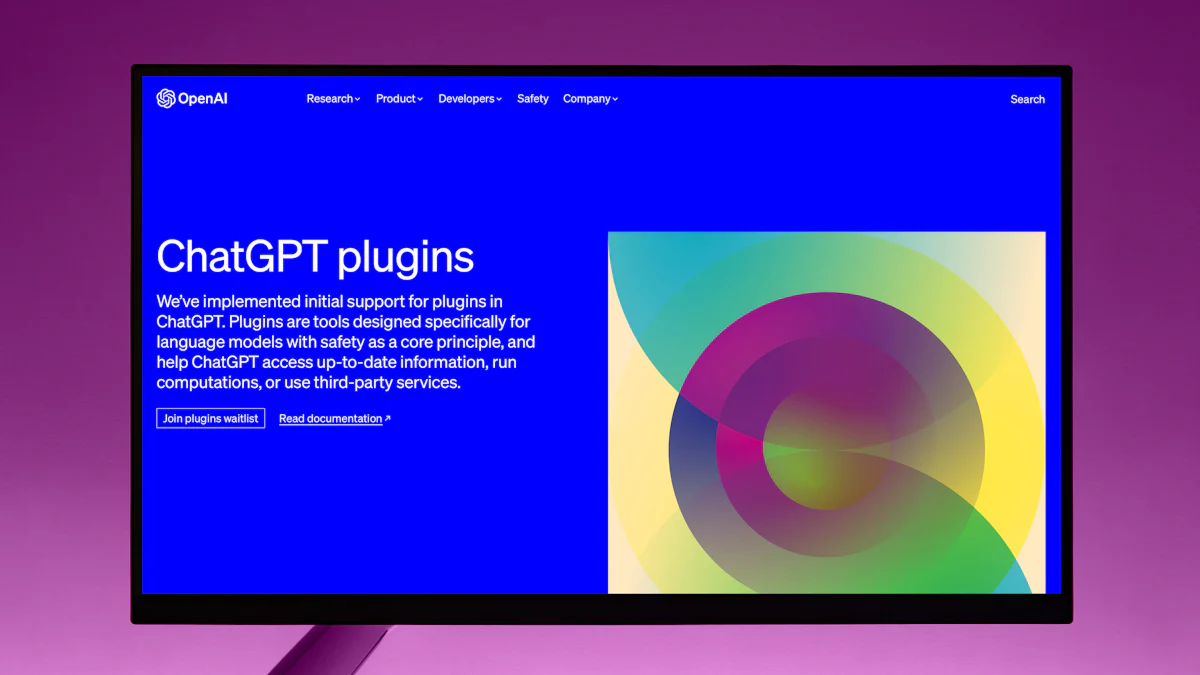How to Implement Website Chatbot Examples Easily

Implementing chatbots on your website can significantly enhance customer service and engagement. Nearly 60% of businesses use chatbots to provide faster support, addressing the frustration of 53% of customers who dislike waiting for replies. Chatbots can also boost engagement rates by 35-40%, making them a valuable tool for online businesses. Choosing the right platform is crucial for seamless integration. Sobot stands out as a leading solution, offering user-friendly tools and features that simplify the process of implementing website chatbot examples. With Sobot, you can effortlessly integrate chatbots into your website, ensuring a smooth and efficient customer interaction experience.
Choose the Right Chatbot Platform
Selecting the right chatbot platform is crucial for successful implementation. You need to evaluate various features to ensure the platform meets your business needs.
Evaluate Platform Features
Consider AI Capabilities
When choosing a chatbot platform, consider its AI capabilities. A robust AI can understand and respond to user queries effectively. It should handle complex interactions and learn from previous conversations. This ensures your chatbot provides accurate and helpful responses, enhancing customer satisfaction.
Assess Integration Options
Integration options are vital for seamless operation. The platform should easily integrate with your existing systems, such as CRM or e-commerce platforms. This allows the chatbot to access necessary data and provide personalized responses. Look for platforms offering API integrations, which enable the chatbot to pull information from third-party services, enhancing its functionality.
Explore Sobot's Offerings
Sobot offers a comprehensive suite of chatbot solutions designed to meet diverse business needs.
Overview of Sobot's Chatbot Solutions
Sobot Live Chat & Chatbot provides innovative features that enhance user experience. It offers real-time communication and AI-driven chatbots for automated responses. The platform supports seamless integration with various systems, ensuring smooth operation across channels. Sobot's solutions are scalable, making them suitable for businesses of all sizes.
Benefits of Using Sobot
Using Sobot brings numerous benefits. You can customize the chatbot to match your brand's tone and style, improving user engagement. Sobot provides robust analytics tools, allowing you to monitor performance and make data-driven improvements. Its user-friendly interface simplifies the setup process, enabling you to implement chatbots quickly and efficiently. With Sobot, you enhance customer service strategies and deliver exceptional experiences.
Set Up an Account with Sobot
Setting up an account with Sobot is a straightforward process that allows you to harness the power of AI-driven chatbots. Follow these steps to get started.
Registration Process
Creating an Account
To begin, visit the Sobot Live Chat Software website. Click on the "Sign Up" button prominently displayed on the homepage. You will need to provide basic information such as your name, email address, and company details. Once you submit this information, you will receive a confirmation email. Click the link in the email to verify your account. This step ensures that your account is secure and ready for use.
Navigating the Dashboard
After verifying your account, log in to access the Sobot dashboard. The dashboard serves as your control center, where you can manage all aspects of your chatbot. Familiarize yourself with its layout, which includes sections for analytics, chatbot customization, and user interactions. The intuitive design makes it easy to find the tools you need. Spend some time exploring the features to understand how they can benefit your business.
Initial Configuration
Setting Up Basic Preferences
Once you are comfortable with the dashboard, proceed to set up your basic preferences. Start by selecting your preferred language and time zone. These settings ensure that your chatbot operates smoothly and aligns with your business's operational hours. You can also customize notification settings to stay informed about user interactions and performance metrics. Tailoring these preferences helps optimize the chatbot's functionality for your specific needs.
Understanding User Interface
The user interface of Sobot is designed to be user-friendly and efficient. It features a drag-and-drop interface that simplifies the process of building and customizing your chatbot. You can easily add or modify elements such as text, images, and buttons. The interface also provides access to pre-built templates, which can save you time during the setup process. By understanding the user interface, you can create a chatbot that effectively engages with your audience and enhances their experience on your website.
Create and Customize Your Chatbot

Creating and customizing your chatbot is a crucial step in ensuring it aligns with your brand and meets your business needs. With Sobot's Customization Tools, you can easily tailor your chatbot to provide a unique customer interaction experience.
Designing the Chatbot's Personality
Choosing a Tone and Style
Your chatbot's tone and style play a significant role in how users perceive your brand. You should choose a tone that reflects your brand's identity, whether it's formal, friendly, or playful. This consistency helps build trust and familiarity with your audience. For instance, a financial institution might opt for a professional tone, while a lifestyle brand might choose a more casual approach. By aligning the chatbot's personality with your brand, you enhance user engagement and satisfaction.
Customizing Responses
Customizing responses allows your chatbot to provide personalized interactions. You can set up automated responses that address common queries, ensuring quick and accurate replies. This customization not only improves efficiency but also enhances the user experience by providing relevant information promptly. Consider incorporating personalized greetings or tailored recommendations based on user data. These small touches can significantly impact customer satisfaction and loyalty.
Utilizing Sobot's Customization Tools
Drag-and-Drop Interface
Sobot offers a user-friendly drag-and-drop interface, making it easy for you to build and customize your chatbot without any coding knowledge. This feature allows you to add or modify elements such as text, images, and buttons effortlessly. You can create a chatbot that aligns with your brand's visual identity and functionality needs. The intuitive design of the interface ensures a smooth setup process, enabling you to focus on enhancing customer interactions.
Pre-built Templates
To streamline the customization process, Sobot provides pre-built templates that cater to various business needs. These templates serve as a foundation, allowing you to quickly set up your chatbot with minimal effort. You can choose a template that closely matches your requirements and then customize it further to suit your brand. This approach saves time and ensures that your chatbot is ready to engage with users effectively. By leveraging these templates, you can deliver a seamless and engaging user experience on your website.
Train the Chatbot with Relevant Data
Training your chatbot with relevant data is essential for enhancing its performance and ensuring it meets your business needs. By using customer interaction data and leveraging FAQs, you can create a more effective and responsive chatbot.
Importing Data
Using Customer Interaction Data
Customer interaction data provides valuable insights into user behavior and preferences. By analyzing this data, you can train your chatbot to understand common queries and provide accurate responses. For example, businesses have successfully used advanced AI chatbots to personalize customer experiences, resulting in cost savings and increased satisfaction. You can achieve similar results by integrating customer interaction data into your chatbot's training process.
Leveraging FAQs and Knowledge Bases
FAQs and knowledge bases are rich sources of information that can enhance your chatbot's capabilities. By incorporating these resources, your chatbot can quickly access and deliver relevant information to users. This approach not only improves efficiency but also enhances the user experience by providing timely and accurate responses. Many businesses have found success by leveraging FAQs to train their chatbots, leading to improved customer satisfaction and better understanding of their audience.
Continuous Learning
Implementing Feedback Loops
Feedback loops are crucial for continuous improvement. By collecting real-time feedback from users, you can identify areas where your chatbot excels and where it needs improvement. This process allows you to make informed adjustments, ensuring your chatbot remains effective and relevant. Businesses that utilize feedback loops often see enhanced customer experiences and reduced costs, as they can optimize their chatbots based on user input.
Updating the Chatbot Regularly
Regular updates are vital for maintaining your chatbot's effectiveness. As user needs and preferences evolve, your chatbot should adapt accordingly. By updating your chatbot with the latest data and insights, you ensure it continues to meet your business needs and provide exceptional customer service. Many companies have found that regular updates lead to improved customer satisfaction and drive business results. By keeping your chatbot current, you can deliver a seamless and engaging user experience.
Test the Chatbot
Testing your chatbot is a crucial step to ensure it functions effectively and meets user expectations. By conducting thorough tests, you can identify potential issues and make necessary improvements.
Conducting Initial Tests
Simulating User Interactions
Begin by simulating user interactions to evaluate how your chatbot responds to various queries. This process helps you understand its strengths and weaknesses. You should test different scenarios, including common questions and complex inquiries. By doing so, you can ensure that your chatbot provides accurate and helpful responses. This step is vital for enhancing customer satisfaction and engagement.
Identifying and Fixing Bugs
During testing, you may encounter bugs or errors in your chatbot's responses. Identifying these issues early allows you to address them before going live. Fixing bugs ensures that your chatbot operates smoothly and delivers a seamless user experience. Regular testing and maintenance are essential for keeping your chatbot up-to-date and effective.
Gathering User Feedback
Analyzing User Experience
After initial testing, gather feedback from users to gain insights into their experiences. User feedback is invaluable for understanding how your chatbot performs in real-world scenarios. According to a recent study, about 53% of respondents find waiting too long for replies the most frustrating part of interacting with businesses. By analyzing user feedback, you can identify areas for improvement and enhance your chatbot's efficiency.
Making Necessary Adjustments
Use the insights gained from user feedback to make necessary adjustments to your chatbot. This process involves refining responses, improving functionality, and addressing any identified issues. A survey revealed that 74% of online businesses using chatbots are satisfied with them, highlighting the importance of continuous improvement. By making adjustments based on user feedback, you can ensure your chatbot remains relevant and effective, ultimately boosting customer satisfaction and engagement. Learn more about our upgraded AI agent.
Install the Chatbot on Your Website

Integrating a chatbot into your website is a straightforward process that can significantly enhance user interaction. By following these steps, you can ensure a seamless installation and operation of your chatbot.
Integration Methods
Using Sobot's Integration Tools
Whether your site is powered by WordPress, Shopify, or Wix, Sobot provides the necessary plugins and extensions to facilitate easy integration.
Embedding Code Snippets
For those who prefer a more hands-on approach, embedding code snippets is an effective method. Sobot provides JavaScript snippets that you can easily paste into your website's HTML. This method is particularly useful for websites not using standard platforms like WordPress. By embedding these snippets, you can quickly deploy your chatbot, allowing it to interact with users in real-time. This approach ensures that your chatbot is up and running with minimal effort, providing a valuable tool for customer interaction.
Ensuring Compatibility
Testing Across Devices
Once your chatbot is integrated, it's crucial to test its functionality across various devices. Users access websites from desktops, tablets, and smartphones, so your chatbot must perform well on all platforms. Conduct thorough testing to ensure that your chatbot responds accurately and efficiently, regardless of the device used. This step is vital for delivering consistent user experiences and maintaining high engagement levels.
Verifying Functionality
After testing across devices, verify the overall functionality of your chatbot. Check that it integrates seamlessly with your existing systems, such as CRM or e-commerce platforms. Ensure that it can access necessary data and provide personalized responses. By verifying functionality, you confirm that your chatbot operates as intended, offering users a smooth and efficient interaction experience. This verification process is essential for implementing successful website chatbot examples that meet your business needs.
Optimize and Monitor Performance
Optimizing and monitoring your chatbot's performance ensures it continues to meet your business needs and enhances user satisfaction. By analyzing metrics and implementing improvements, you can maintain an effective and engaging chatbot.
Analyzing Chatbot Metrics
Understanding your chatbot's performance requires tracking key metrics. These insights help you identify areas for improvement and ensure your chatbot delivers optimal results.
Tracking Engagement Rates
Engagement rates indicate how users interact with your chatbot. High engagement suggests that users find the chatbot helpful and relevant. You should monitor these rates regularly to assess the effectiveness of your chatbot's interactions. For instance, a well-optimized chatbot can achieve an 80% success rate in user engagement, significantly boosting customer satisfaction and loyalty.
Monitoring Response Times
Response times are crucial for maintaining user satisfaction. Users expect quick replies, and long waiting times can lead to frustration. By monitoring response times, you can ensure your chatbot provides timely assistance. A well-trained chatbot can reduce waiting times and answer questions with 95% accuracy, enhancing the overall user experience.
Implementing Improvements
Once you have analyzed the metrics, focus on implementing improvements to enhance your chatbot's performance. This process involves refining user interactions and updating features based on data insights.
Enhancing User Experience
Improving user experience involves making your chatbot more intuitive and responsive. You can achieve this by refining its responses and ensuring it addresses user needs effectively. For example, a chatbot trained on 62 products can answer 283,000 questions a month with 96% accuracy. Such precision enhances user satisfaction and encourages repeat interactions.
Updating Features Based on Data
Data-driven updates ensure your chatbot remains relevant and effective. By analyzing user interactions and feedback, you can identify features that need enhancement. Implementing these updates can lead to a 40% increase in lead conversion rates, demonstrating the value of continuous improvement. Regular updates keep your chatbot aligned with user expectations and business goals.
By optimizing and monitoring your chatbot's performance, you ensure it remains a valuable tool for customer interaction. Utilizing platforms like Sobot, which offers robust analytics and customization options, can simplify this process. For more insights on chatbot optimization, consider exploring resources like Chatbot Magazine.
Implementing a chatbot on your website involves several key steps. You start by choosing the right platform, like Sobot, which offers user-friendly tools and seamless integration. Setting up an account, customizing your chatbot, and training it with relevant data are crucial for success. Testing and optimizing ensure your chatbot meets user expectations.
Testimonial: "With Sobot, our agents could help a lot of people at once while still giving each one individual attention. This helped us raise the first answer rate by 49%, the conversion rate by 6.8%, and the CSAT rate by 75%, which is truly amazing!"
Sobot stands out with its innovative features and leadership in the industry. Its live chat software revolutionizes customer support, improving response times and satisfaction. Explore additional resources to further enhance your chatbot's capabilities and stay ahead in the competitive market. For more insights, visit Chatbot Magazine.
See Also
Easily Build a Chatbot for Your Website Today
Simple Steps to Integrate a Chatbot on Your Site
Effortless Guide to Adding a Chatbot to Your Site